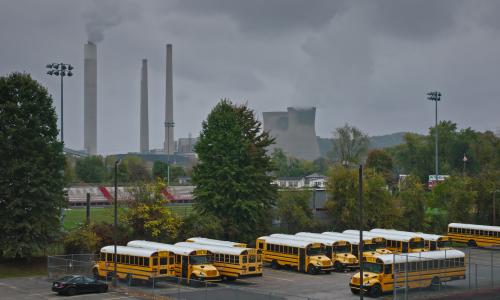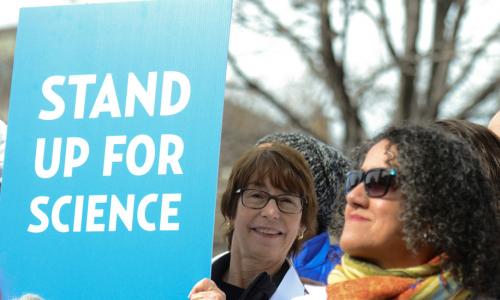Table of Contents
We know it’s getting warmer. Due primarily to the burning of fossil fuels like oil, coal, and gas, and the cutting and burning of tropical forests, each of the past six decades was hotter than the last.
Human activities are causing heat-trapping gases such as carbon dioxide and methane—also known as greenhouse gases—to build up in the atmosphere. The rising concentration of these gases, largely due to fossil fuel industry-driven carbon pollution, is a key cause of climate change.
Other changes in our environment also signal that people are profoundly altering Earth’s climate.
Here are 10 key signs of climate change, plus two bonus signs.
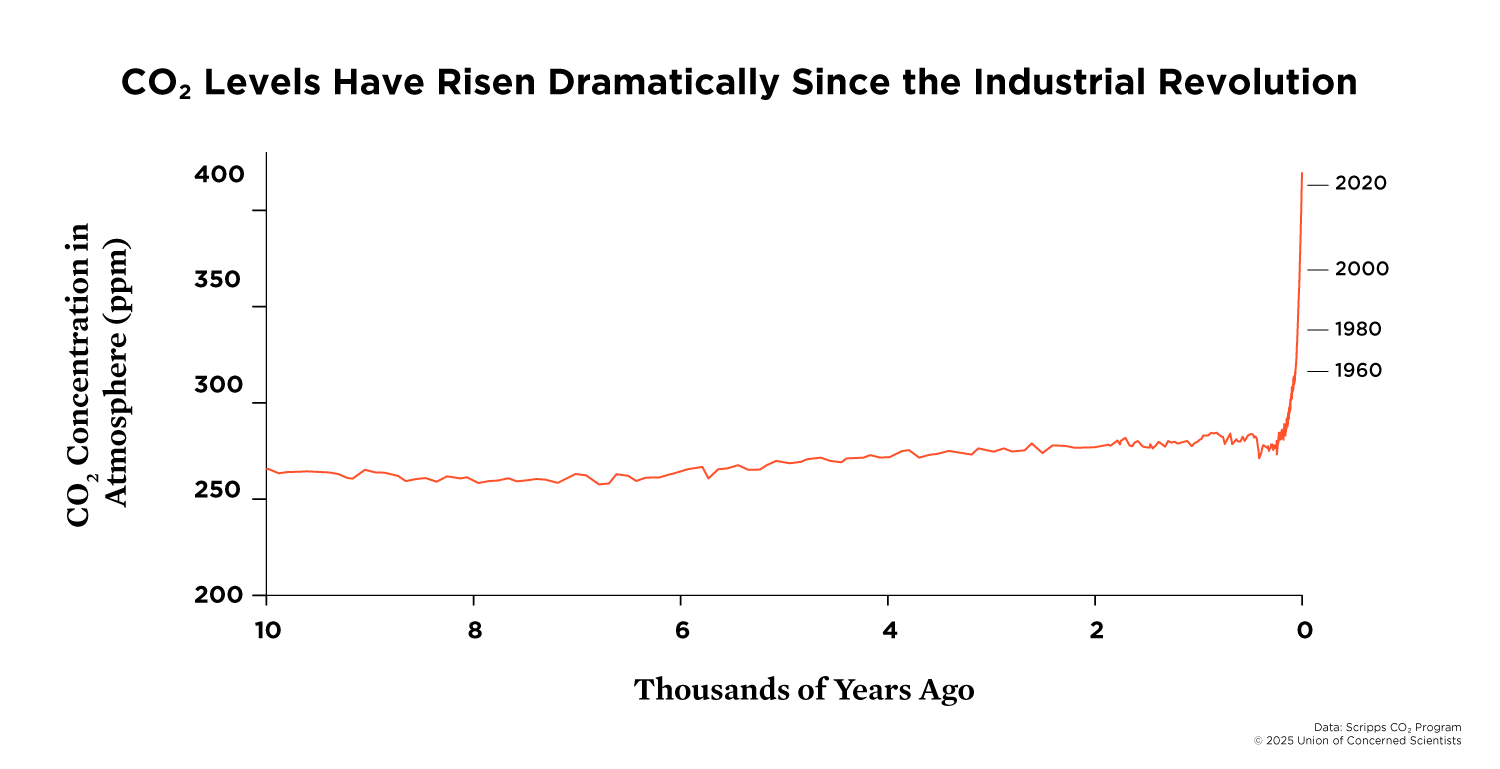
1. Global temperatures are increasing
The global average temperature is rising. It’s one of the clearest signs of climate change. On average, each decade since the 1950s has been warmer than the previous decade. And since 1901, the planet has warmed by about 1.1°C (1.98°F). Not only is the temperature rising, but it’s rising at a faster rate every decade.
The cause: more than a century of extracting and burning fossil fuels has produced a buildup of heat-trapping gases in the atmosphere. Like a blanket, these gases trap heat that would otherwise radiate from the Earth through the atmosphere and out to space. As a result, the global average surface temperature—that is, the average temperature of the Earth’s land and sea surface around the globe—is increasing, as is the temperature of the lower atmosphere, the ocean, and soil.
We know this because temperatures are measured using a combination of satellites, weather stations and ocean buoys across the globe. These readings show that some parts of the world, like the United States, are warming faster than others. As shown in this NASA visualization, the Arctic is warming faster than the global average.
2. Ocean temperatures are increasing
Earth’s oceans have an incredible capacity to absorb and store heat. The top half-mile of most major ocean waters is getting significantly warmer, and the frequency, duration, extent, and severity of marine heatwaves is increasing. Rising ocean heat content also alters patterns of ocean circulation, which have far-reaching effects on global climate patterns, weather events, and temperatures around the world.
Hotter waters are also damaging coral reefs, threatening marine ecosystems, and disrupting global fisheries which many people around the world rely on for their chief source of protein.
Some regions are warming faster than others: the Gulf of Maine off the US Northeast coast is warming 99 times faster than the rest of the world’s oceans.
The Gulf of Maine off the US Northeast coast is warming 99 times faster than the rest of the world’s oceans.
3. Soil temperatures are increasing.
This is particularly concerning for soil that has historically been frozen all year long, called “permafrost.” Thawing permafrost in Alaska, Siberia, and Greenland is risking the homes and livelihoods of people living in Arctic regions, disrupting ecosystems and habitat for many species, damaging infrastructure, and releasing large amounts of carbon from plant or animal remains that have been locked up in these soils over thousands of years.
Boreholes in parts of the Arctic track permafrost temperatures and show that a growing number of locations are crossing the threshold from freezing to thawing. When permafrost is above that critical threshold, carbon from the decomposing remains can be released to the atmosphere as methane gas, setting off a feedback loop of warming.
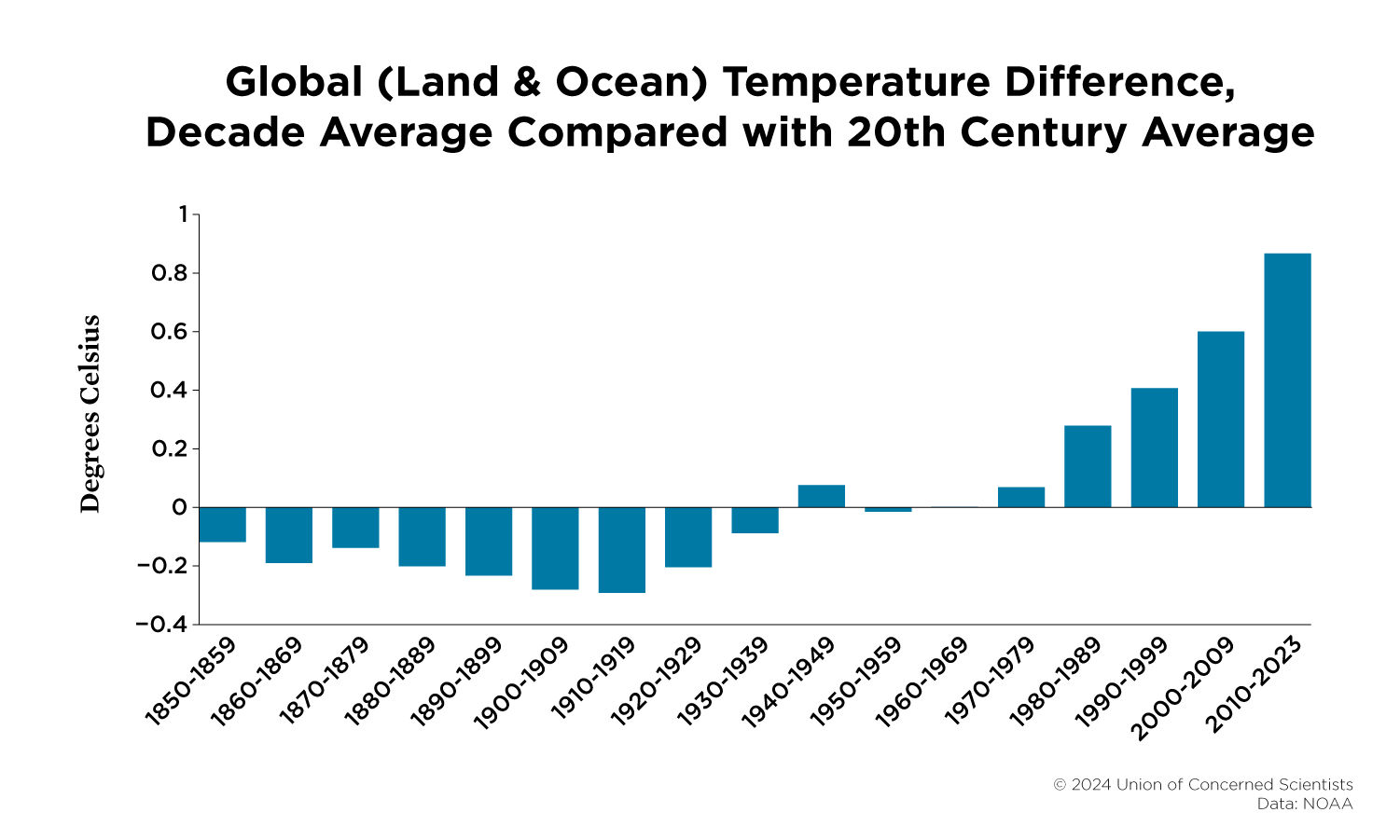
4. Oceans are more acidic
As carbon dioxide is added to the atmosphere, about 29% of it dissolves into the surface of the ocean, making the ocean more acidic.
Ocean monitoring stations around the world show that globally, the acidity of the surface of the ocean has increased by nearly 30% over the past 200 years.
And between 1880-2015, more than half of the increase in ocean acidity is tied to emissions from fossil fuel producers and cement manufacturers.
Though a less well-known and less visible sign of climate change, the consequences for marine life are growing, particularly affecting the ability of organisms like oysters to form their shells.
5. Humidity is increasing
Warming of the land or the ocean leads to more water evaporation, and consequently an increase in atmospheric humidity, which is a measure of how much water vapor is in the air. Weather stations and satellite data show that the amount of water vapor in the air has increased by nearly 7% since the late 1980s. That matters for a few reasons.
First, because water vapor is a heat-trapping gas, the increase in humidity causes additional warming.
Second, humidity makes high temperatures feel even hotter to our bodies and increases the risk of heat-related health problems.
Finally, the fact that a warmer atmosphere can hold more water vapor means that more water can fall during heavy rainfall events. In recent years, severe and unprecedented heavy rains have devastated communities and ecosystems.

6. Arctic sea ice extent is diminishing
Satellite records of both summer and winter sea ice extent show a near-linear decline over the last 44 years, with summer extents decreasing at nearly twice the rate of winter extents.
On average, an area of sea ice equivalent to the size of Nebraska and Rhode Island combined is lost each summer. Although the sea ice extent and thickness vary somewhat from year to year, the overall trend is negative. The ice’s extent and thickness are now well below conditions in the 1980s and 1990s.
As a consequence, during the summer of 2022, both the Northwest Passage and Northern Sea Route were largely free of ice, a phenomenon largely unheard of prior to 2007.
7. Springtime snow cover is going down
The area covered by snow in the Northern Hemisphere in the spring is getting smaller, not only because there is less snow in some areas and years, but also because snowpack—the layer of snow on the ground that stays as a frozen reservoir for months—is melting earlier in the year due to warmer temperatures.
People all over the world rely on melting snow to replenish their water supplies, generate electricity, and recharge aquifers. Reduced snow accumulation and an earlier snow melt date can reduce water availability and threaten ways of life. They can also worsen other climate-related extreme conditions:
In the Western US, record low levels of snowpack in the Sierra Nevada exacerbated the extreme drought California experienced from 2012 to 2016.
The Western US recently experienced its driest 22-year megadrought in 1200 years. In addition to an overall trend of reducing snowpack levels, the hotter, drier conditions have been linked to larger and more severe wildfires in western North America.
8. Glaciers are shrinking
Warming temperatures are causing glaciers around the world to shrink at an astonishing pace. More than 200 billion tons of ice—enough to cover New York’s Central Park in a block of ice more than 40 miles high—are lost every year, and the pace of ice loss has accelerated during the 21st century.
In many places around the world, such as the Himalayas and the Andes, glaciers are an essential source of water for drinking, irrigating crops, producing hydropower, and replenishing aquifers.
In addition to reducing water supply, glacial loss can destabilize and erode underlying soils, leading to hazards such as floods, landslides and avalanches for communities below.
9. Forest fire season is longer
Over the past several decades, almost all aspects of wildfires have worsened across the forests of western North America. Wildfires are burning larger areas, more severely, at higher elevations, and over a longer fire season.
Climate change is causing hotter, drier conditions that are fueling these increasingly large and severe wildfires. Since the mid-1980s, the area burned by forest fires in western North America has doubled because of the increased aridity (Abatzoglou and Williams 2016), while the length of wildfire season has increased by nearly two months (Westerling 2016; Westerling et al. 2006).
Not only do we know wildfires’ larger areas and longer seasons are due to climate change, but that nearly 40% of the forest area burned in western North America since 1986 can be directly traced to emissions from the world’s largest fossil fuel producers and cement manufacturers.
10. The seas are rising
Records show that global average sea level has been rising at least since 1901 and that the pace of that rise is accelerating. Between 1901 and 1971, sea level rose at a rate of 0.05 inches per year. Between 1971 and 2006, that rate rose to 0.07 inches per year, and since 2006, the rate has roughly doubled to 0.15 inches per year.
The main reasons for the rise are thermal expansion of sea water due to higher ocean temperatures (warmer water expands) and the accelerating addition of water from melting of land ice, such as glaciers and ice sheets.
Coastal communities around the world are experiencing the impacts of rising sea levels, including the permanent loss of land, more frequent flooding at high tides, and higher, farther-reaching storm surges. Sea level rise also threatens coastal infrastructure, freshwater supplies, and ecosystems like marshes that naturally protect our coasts.
11. Weather is becoming more extreme
Hurricanes, wildfires, droughts, floods, and heatwaves have occurred throughout history, but global warming is changing the likelihood and severity of extreme events such that they pose greater risks to people.
The Northern Hemisphere summer, which UCS has named “Danger Season,” is when the US experiences most of its heat waves, hurricanes and tropical storms (and their attendant floods), and wildfires. It’s also the season when droughts get exacerbated by hot conditions.
While it’s important to bear in mind that different types of severe weather events have some aspects that are changing a lot while others less so—and not all changes are attributable to climate change—there are some clear patterns that have emerged from recent research. For instance:
-
Human-caused climate change is increasing heat extremes around the world, including across much of North America.
-
The proportion of Atlantic tropical cyclones undergoing rapid intensification has roughly tripled, and the number of hurricanes globally reaching the strongest categories has increased over the last four decades.
Each of these types of climate-related extremes brings with it danger. Exposure to extreme heat can bring on heat stress or heat stroke, the latter of which can be fatal. Storm surge and floods associated with hurricanes can also be fatal, and long-term exposure to mold in flood-damaged homes can cause respiratory issues. And exposure to the poor air quality associated with wildfire smoke—even short-term—increases mortality risks.
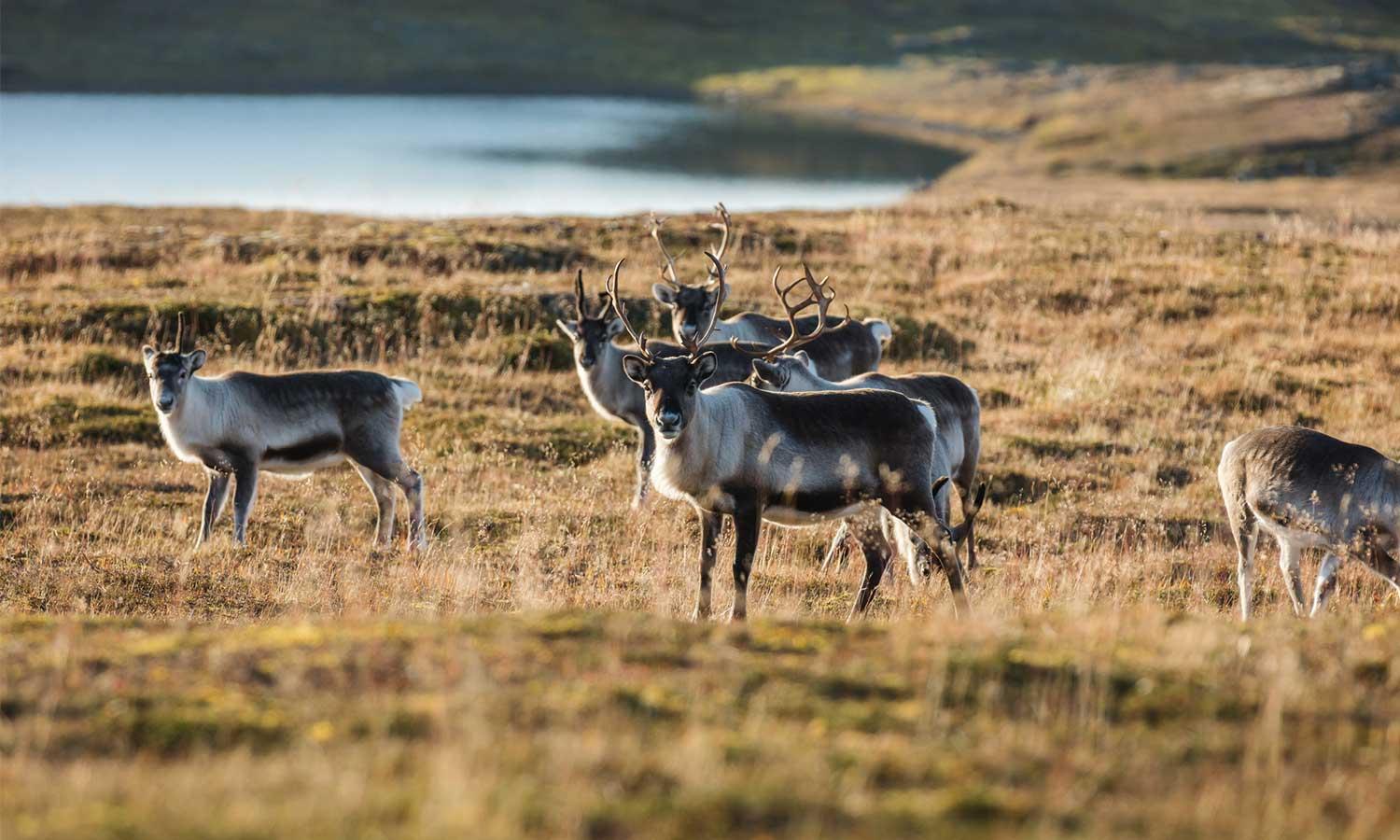
12. Plants’ and animals’ ranges are shifting
In the ocean and on land, life is on the move in response to climate change. Many of the above-mentioned signs of climate change combine to influence habitat conditions, such as available energy and food sources. The changing climate is also affecting plants’ and animals’ ability to thrive where they live.
Studies show that roughly half of species that have been assessed around the world have shifted their ranges toward the poles or to higher elevations. Scientists have documented these shifts, which can be seasonal, temporary, or permanent groups including: birds, [bird wintering ranges] in North America, coral reefs, whale migration, plants and crops in the US , marine species and people.
It's not too late
Climate-warming emissions have risen for decades largely because the fossil fuel industry deceived the public about the harm it knew burning fossil fuels would do to the climate. The industry’s disinformation has had the effect of constraining human energy choices, resulting in a significant rise in carbon emissions with catastrophic results.
Despite the huge, unprecedented changes humans are causing to the world’s climate, it’s not too late to stop burning fossil fuels and reduce these harms. You can help by calling for accountability, supporting efforts to build climate resilience, and by supporting and investing in clean energy technologies like solar and wind power, energy storage, and electric transportation.
Click here for more information.


